Many prominent Canadian women are featured on Canada stamps. They have been so honored due to their extraordinary accomplishments and contributions to society as well as to their hard work on behalf of the advancement of women’s rights. This is Part 2 of this series of articles celebrating famous Canadian women on stamps.

Adelaide Hoodless
Adelaide Hoodless (1857-1910) was born and raised on a farm in western Canada. Her father died when she was still a baby and her mother fought and worked hard to keep the farm and the family afloat. After her marriage, Adelaide led an easier life but was devastated by the death of her baby son. It is generally believed that the infant died from ingesting contaminated milk. It was this tragedy that spurred her to reach out to women, especially those living in rural areas, and found institutes which would support fellow wives and mothers. Primarily, her goal was teaching women the knowledge and skills they needed to take better care of their families. Adelaide Hoodless is recognized with having helped establish the Women’s Institute, the YWCA, and VON (Victorian Order of Nurses). She also wrote several course outlines which would serve to teach home economics in schools. She died while giving a speech at a college in Toronto.

Marie-Joséphine Gérin-Lajoie
Marie-Joséphine Gérin-Lajoie (1890-1971) was the daughter of a hard-working Quebec feminist and suffragette (Marie-Lacoste Gérin-Lajoie). Marie-Joséphine is recognized as being the first French Canadian woman to receive a Bachelor’s of Arts degree in 1911. She founded a religious institute, “Les Soeurs Notre-Dame-du-Bon-Conselil”, and through it fought for women’s rights and an improved social order. Marie-Joséphine’s religious community primarily concerned itself with social work: teaching impoverished women, female domestic workers and immigrants.

Pitseolak Ashoona
Pitseolak Ashoona (1904?–1983) was an Inuit Canadian artist born in the Northwest Territories. She was raised the traditional Inuit way by her parents before marrying and giving birth to 17 children. Sadly, only 5 of her children survived past infancy. When her husband died, leaving her alone with her children to raise, she eventually turned to drawing to support her family. Her vivid paintings depict Inuit life before the white man, as well as many Inuit legends and mythology. Pitseolak was made a Member of the Order of Canada in 1977.

Helen Alice Kinnear
Helen Alice Kinnear (1894-1970) was a female Canadian lawyer whose judicial career was filled with many “firsts”. She was the first federally appointed female judge in Canada. Prior to that appointment, she studied law and became a lawyer in Ontario in 1920. She diligently worked her way up through the court system over the years to finally become the first female lawyer to argue a case before the Canadian Supreme Court. She was also the first female to be appointed to serve as “King’s Counsel”, a class of lawyers with distinction.

Jeanne Sauvé
Jeanne Sauvé (1922–1993) was born in Saskatchewan and educated in Canada and Paris. When she returned to Canada, she worked as a journalist for the CBC. Her political career began when she was elected to the House of Commons. She continued to work there as Speaker of the House until her appointment in 1984 as the first female Governor General of Canada. She took her job as Governor General seriously, trying to raise awareness for this role in and for some of the causes she held to especially: namely, national unity and youth. After her retirement she set up a fund to help youths. She held many titles, such as Companion of the Order of Canada.

Mary Travers-«La Bolduc»
Mary Travers-Bolduc (1894–1941) was a French Canadian singer and musician who was affectionately known as “La Bolduc”. At a young age she learned traditional Quebecois reels and jigs and played the fiddle, among other instruments. As a girl, she occasionally played in public and her peppy style was appreciated by audiences. She was eventually sent by her family to work in the city of Montreal where she observed and experienced the hardships of the working man and woman. It was the time of the Great Depression and the common man was suffering in miserably paid jobs and working conditions. Mary married Edouard Bolduc and raised her family, but hard times led her to rely on her musical talent again. Her witty and sometimes cheeky songs which spoke of everyday life and the struggle for the poor to survive resonated in the hearts of people and her musical group soon become famous, touring Quebec and New England. A cancerous tumour discovered in 1937 slowed her career and “La Bolduc” passed away in 1941.

Ethel Catherwood
Ethel Catherwood (1908–1987) was born in the United States but grew up in Saskatchewan, Canada. She was an exceptional athlete and was breaking records in track and field in her late teens. In 1928, Ethel competed in the Summer Olympics and brought home the gold in high jump, the first female Canadian athlete to do so. She garnered as much attention for her pretty looks as she did for her athletic prowess, affectionately nicknamed the “Saskatoon Lily” by the press of the time. In 1955, Ethel Catherwood was inducted into the Canada Sports Hall of Fame and still holds the record as being the only female athlete in Canada to bring home a gold for a track and field event where an individual competes on their own. She lived out the remainder of her life in California.

Fanny Rosenfeld
Fanny Rosenfeld (1904-1969) was a Canadian athlete, born in Russia, who won gold for Canada at the Summer Olympics of 1928 in the 400m relay race. She was nicknamed “Bobbie” for her bobbed haircut. She is considered by many to have been the best Canadian female athlete of the first half of the 20th century, excelling in several sports, although she chose to concentrate on track and field for the Olympics. Eventually, an arthritic condition obliged her to end her athletic pursuits, but she continued to coach. Fanny would also write for the Globe and Mail sports column. She was inducted into the Canadian Sports Hall of Fame in 1955.

Margaret Laurence
Margaret Laurence (1926–1987) was a Canadian author and novelist who was born and raised in Manitoba. After her marriage, she began to write short stories and discovered that she had a talent for fiction. She and her husband lived in Africa for awhile, but upon her return to Canada her writing began to attract serious attention. She soon published “The Stone Angel” which is still considered a classic Canadian novel. Her works often explore the life experiences of women. She won many awards throughout her career, including two Governor General’s Awards and was named a Companion of the Order of Canada. After being diagnosed with cancer, Margaret Laurence committed suicide in 1987.

Gabrielle Roy
Gabrielle Roy (1909–1983) was born in Manitoba and was a French Canadian author. Though she grew up in the prairies (in a family of 11 children), Gabrielle’s mother taught her many stories of the life and heritage of French Quebec. She eventually settled in Quebec and wrote stories about life in Montreal, especially from the viewpoint of the poor. Her breakout novel, translated into English as “The Tin Flute” won her many awards, including the Governor General’s Award in 1947. All of her works are considered to contain deep and thought provoking themes and she is considered to be one of the greatest French Canadian writers. Gabrielle Roy died at the age of 74.

Martha Black
Martha Black (1866–1957) was born in Chicago but as an adult eventually moved to the Yukon in the days of the gold rush. She was an enterprising woman who made a living for her family (she had three children from a failed first marriage) in the wilds of the Klondike by working her gold mining claims and operating a sawmill. She married George Black in 1904. Her husband worked in politics, and Martha ended up running to take her husband’s seat when he became too sick to maintain it. Martha Black was the second woman to be elected to the Canadian House of Commons. She was a true pioneer woman, braving the Northern climate to win the respect of the residents of the Yukon and she fought hard to defend their rights and that of the Yukon’s wild and beautiful landscape.

Judy LaMarsh
Judy LaMarsh (1924–1980) has many claims to fame. She was an author and a radio broadcaster with her own show on the CBC, interviewing prominent Canadian personalities such as Margaret Atwood. She is most known for her work as a female Canadian politician. She is the second woman in Canadian history to have served as a Cabinet Minister; she was also Minister of National Health and Welfare. She was elected to the Canadian House of Commons and was instrumental in establishing government programs for Medicare and the Canada Pension Plan. Judy LaMarsh was also in charge of organizing Canada’s Centennial celebrations which took place in 1967. She is renown for uttering her opposition to the election of Pierre Trudeau. Judy LaMarsh died of cancer.

Phyllis Munday
Phyllis Munday (1894–1990) was born in Sri Lanka but her father moved the family to Vancouver, Canada in 1901. At an early age she became enchanted with mountaineering, climbing her first mountain as a member of the Girl Guides. Her love of climbing would last her a lifetime and through it she met and married her husband, Don Munday. Together the Mundays became famous for many first ascents and the discovery of new peaks in the Canadian Rockies, such as Mount Waddington. Phyllis Munday, or “Phyl” as her friends and family called her, was a female mountain climber in an age when women were only supposed to tend their homes and cook for their families. Phyllis broke all the rules of society, but her mountaineering companions had immense respect for her achievements; she could out-carry and out-haul any man on the trek. Even motherhood would not slow her down, she climbed a mountain with her eleven-week old daughter on her back. Phyllis died at the age of 95, the receiver of many awards and recognitions.
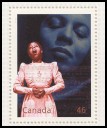
Portia White
Portia White (1911–1968) was born in Truro, Nova Scotia. At an early age she would sing in the church choir where her father was a minister. Her exceptional contralto voice was soon noticed and she embarked on a career as an opera singer. As a black Canadian and a woman, Portia was faced with the prejudices of many during her career. Bigotry barred her from performing in some venues and staying in certain hotels. Portia continued to fight for her art and happily her talent was recognized and she became an international sensation, singing for the Queen among others. Unfortunately, her career was short-lived due to vocal problems and she retired to teach music to other vocal greats such as Robert Goulet, Dinah Christie and Lorne Green. Portia White died of cancer in Toronto.

Barbara Frum
Barbara Frum (1937–1992) was a Canadian radio and television journalist. She is famous for hosting the radio show “As It Happens” on the CBC—a radio show that still broadcasts to this day. Barbara grew up in Niagara Falls, Ontario and soon pursued a career in journalism. She was always interested in human interest stories and social issues of the day. Her interview technique earned her many accolades in the industry, she was both tough and full of humanity. Barbara eventually left radio programming to host “The Journal” a news magazine airing every night on CBC TV. She interviewed many famous and influential personalities during her television news career. She also earned many journalism awards and received the Order of Canada. Barbara Frum died of leukemia in 1992.
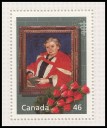
Maude Abbott
Maude Abbott (1869–1940) was born in Quebec and raised by her grandmother. She was a cousin of John Abbott, one of Canada’s Prime Ministers. She was one of Canada’s earliest female doctors although her work concentrated mainly on research and teaching as opposed to actually practicing medicine. Maude was eventually made curator of the McGill Pathological Museum. Among other things, her work consisted of collecting specimens for teaching purposes and she wrote many papers on congenital heart disease. She eventually became a leading authority on cardiac disease. Maude Abbott was also a member of the Canadian Medical Hall of Fame.
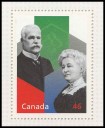
Dorimène Desjardins
Dorimène Desjardins (1858-1932) was born in Sorel, Quebec. She later joined her uncle’s family and pursued her education in the city of Lévis, Quebec. Here she met her husband, Alphonse Desjardins. Together, they founded the Caisses populaires Desjardins, a member-owned financial cooperative. This community minded and democratically controlled venture improved the life of many locals by providing financial assistance which might otherwise have been refused by a bank. Dorimène was instrumental in setting up the first Caisse. Her business acumen, accounting abilities and willingness to listen to the personal stories of the people seeking assistance made her a vital asset to the institution. She was one of the first Canadian women to be involved in an enterprise of finance and her example inspired many other women to follow suit.

Lucille Teasdale
Lucille Teasdale (1929–1996) was born in Montreal, Quebec. At a young age, she attended a boarding school run by nuns and was inspired by the example of some visiting nuns who had done missionary work in China. She was also struck at a young age by the plight of the poor and sick while doing volunteer work in a medical clinic. She decided to become a doctor, specifically a surgeon. Part of gaining her medical degree entailed working abroad; this eventually led to her working in Uganda along with Piero Corti, an Italian doctor who would become her husband. Together, they ended up staying in Uganda and setting up hospitals and ministering to the sick through civil war and often atrocious conditions. Lucille ended up contracting HIV while operating on a dying soldier and died of Aids in 1996. Her legacy lives on in the Foundation which bears her name.

Pauline Vanier & Elizabeth Smellie
Pauline Vanier (1898–1991), along with her husband Georges, was instrumental in bringing about changes to Canada’s harsh immigration laws of the first half of the 20th century. The Vaniers were in Europe at the break of World War 2 serving as diplomats to the League of Nations. Upon their return to Canada, they tried to drum up support for the war effort at a time when many Canadians were not yet ready to accept the magnitude of the situation in Europe. When refugees, notably many Jews fleeing Nazi oppression, started turning up on our shores asking for asylum, the Vaniers fought hard to convince the government for the need to relax its strict immigration policies. It was only after the war, now too late for many, that they succeeded. Georges Vanier went on to serve as Governor General of Canada with his wife Pauline at his side; she was an invaluable companion. They both served many humanitarian causes right up to their deaths.
Elizabeth Smellie (1884–1968) was born in Ontario, Canada and trained in the United States to become a nurse. During World War 1, she served in hospitals in Britain, eventually become matron, or head nurse, of one of them. She returned to Canada after the war, where she pursued additional nursing training and even served as the Chief Superintendent of VON. During World War 2, she received the distinction of becoming the first woman colonel of the Canadian military, serving as Colonel in the Canadian Women’s Army Medical Corps.
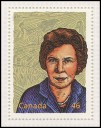
Hilda Marion Neatby
Hilda Marion Neatby (1904–1975) was born in England but emigrated to Canada where she studied at the University of Saskatchewan. She was a noted author and professor and wrote various works about the history of Canada, specifically, about the British victory over the French and the consequences of that take over for the territory today known as the province of Quebec. Perfectly bilingual, she also taught history and wrote about the educational system in Canada.
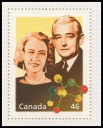
Dorothy Killam
Dorothy Killam (1899-1965) was married to Izaak Killam who was a very successful business man. He and his wife discussed using their fortune to encourage post-secondary education and scientific research in Canada. After Izaak’s death, Dorothy increased their fortune by almost double and left a will leaving it in trust to various universities to be used for funding various scholarships. She also left a bequest for the funding of a children’s hospital in Halifax. The value of these trusts is in the hundreds of millions of dollars.
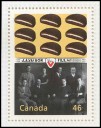
Rose-Anne Giroux Vachon
Rose-Anna Giroux Vachon (187?-1948) and her husband, Joseph-Arcade Vachon decided to set up a bakery in 1923 after having farmed their whole life. They wished to establish a business that their whole family could be involved in, thereby keeping everyone together. They borrowed $7000 (a tidy sum back then) for their bakery and began by baking bread. Their children soon joined the business and in 1924 “J.-A. Vachon & Fils” was born. They eventually stopped baking bread and concentrated on producing little cakes (one of my guilty pleasures is their “Ah Caramel!” cake). The Vachon company is probably most famous for its “Jos Louis” cake (named after the American boxer of the same name), two chocolate sponge cakes filled with cream and coated in chocolate. Rose-Anna retired in 1945 and passed away 3 years later in 1948.
Don’t forget to check back for Part 3, the last part in our series of “Famous Canadian Women on Stamps”.
After all Marlene Stewart-Streit has done for Canada in the world of amateur golf, she should be honoured on a Canadian stamp. She is the only women who has been inducted in the World Golf Hall Of Fame, among other achievements.